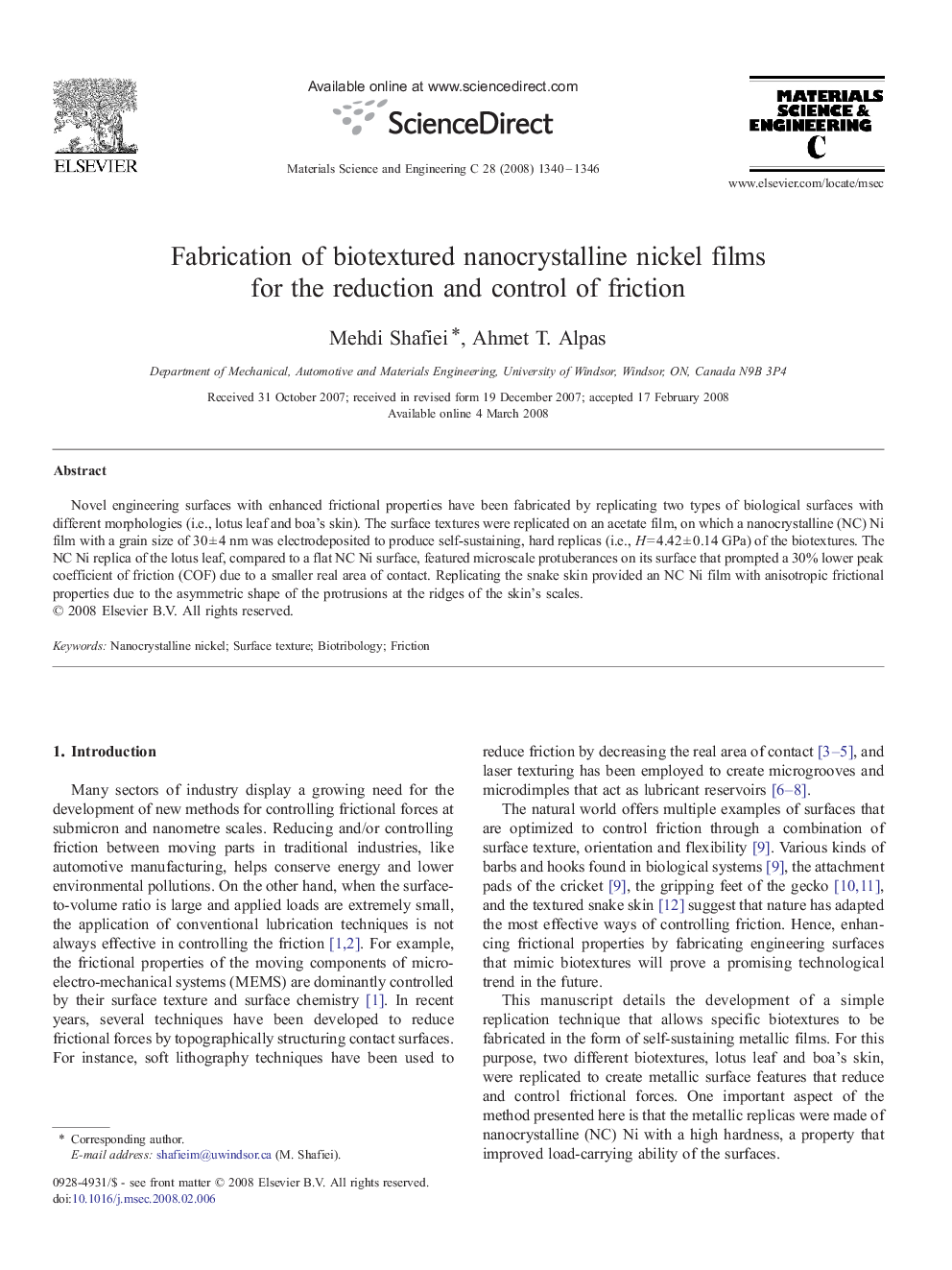| Article ID | Journal | Published Year | Pages | File Type |
|---|---|---|---|---|
| 1430834 | Materials Science and Engineering: C | 2008 | 7 Pages |
Novel engineering surfaces with enhanced frictional properties have been fabricated by replicating two types of biological surfaces with different morphologies (i.e., lotus leaf and boa's skin). The surface textures were replicated on an acetate film, on which a nanocrystalline (NC) Ni film with a grain size of 30 ± 4 nm was electrodeposited to produce self-sustaining, hard replicas (i.e., H = 4.42 ± 0.14 GPa) of the biotextures. The NC Ni replica of the lotus leaf, compared to a flat NC Ni surface, featured microscale protuberances on its surface that prompted a 30% lower peak coefficient of friction (COF) due to a smaller real area of contact. Replicating the snake skin provided an NC Ni film with anisotropic frictional properties due to the asymmetric shape of the protrusions at the ridges of the skin's scales.
